Pool Decks
In the scorching summer heat of Southern California, the backyard pool has become an inviting and uniting oasis. Renovating an old pool patio or choosing the best pool paving materials to surround it, is one of the most crucial pool design decisions. Even if your kids are fish and rarely come out of the water, the surrounding surface will get as much, if not more use than the pool itself.
Choosing the best pool paving materials is a pursuit that can become complicated. Materials, colors, textures, and designs seem to present countless options. However, with a little guidance, you can quickly be traveling down the cool and exciting path that leads to the pool area of your dreams.
Considering the Best Pool Paving Material Options for Southern California
When you consult with a pool company in Los Angeles or the surrounding areas, the actual pool is only one of the parts that drive the cost of the overall plan. However, if a poor pool paving material choice is made, it can mean the di fference between loving or hating the time you spend in the backyard. Regardless of the materials you choose, there are 4 main requirements for pool paving materials:
4 Main Requirements for Pool Paving Materials
- Pool patios need to reflect heat so they’re tolerable to walk on barefooted.
- Pool patios need to be safe, so smooth textures should be avoided.
- Pool patios need to allow surface water to drain so the surface will dry quickly.
- Pool patios need to require very little maintenance.
In order to help you make sure that the best pool paving materials for your project, here is a round-up of some of the common choices for pool deck materials:
PAVER PATIOS AROUND POOLS
Interlocking pavers come in a wide variety of colors, sizes, and textures. Combine the design versatility of borders, unique patterns, and the mixing of materials, and pavers (paving stones) have become an extremely popular choice among the best pool paving materials you can find.
Paving stone manufacturers frequently come out with new products that expand options in both contemporary and old-world styles. Pavers are a unique form of manufactured concrete, superior to traditional concrete. Each year some cutting-edge product is introduced, with one of the latest paving stone innovations of outdoor porcelain tiles. We expect that product to continue to increase in its popularity.
Some of the best paving around pools you will find in the Los Angeles area are made from pavers. When these surfaces use polymeric sand between stones, the joints lock together and drain much more quickly than poured concrete patios. Many styles of pavers offer the safest surfaces to prevent slips around pools.
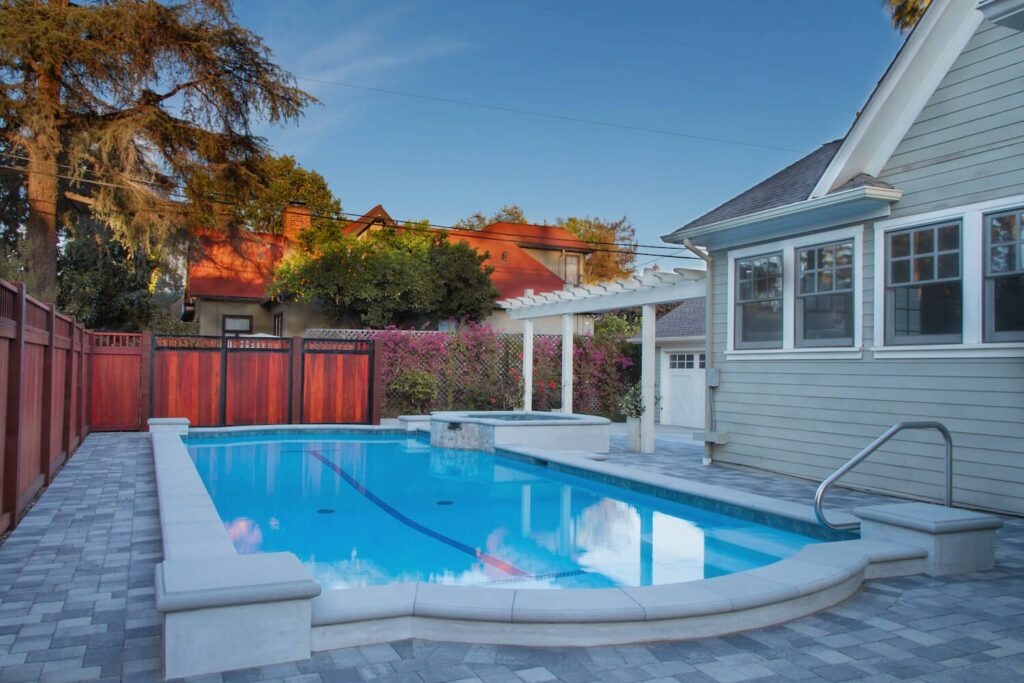
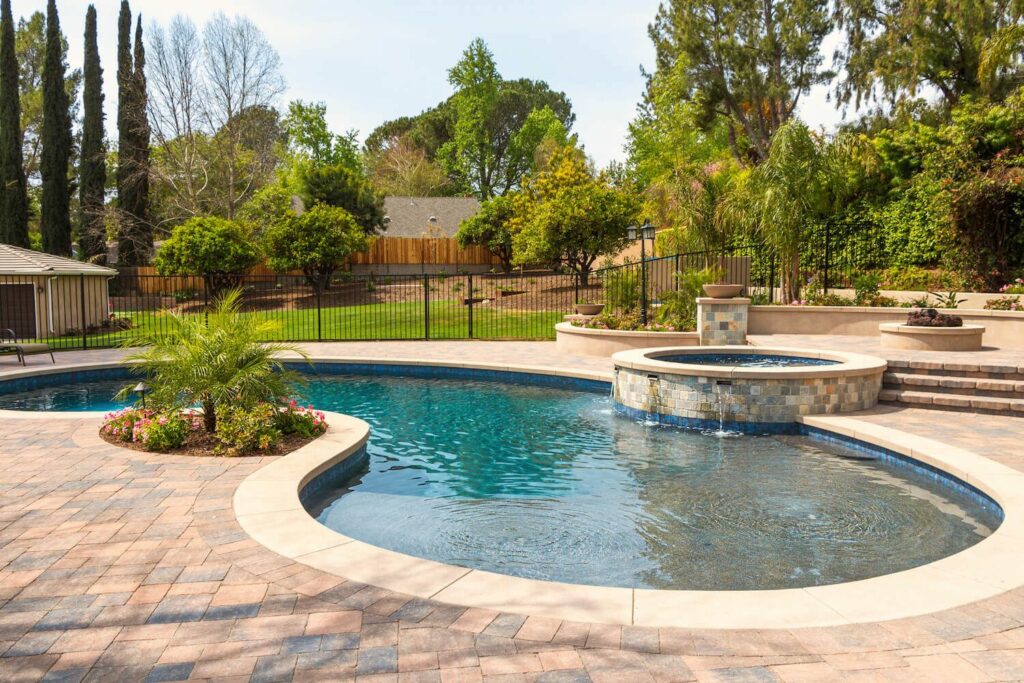
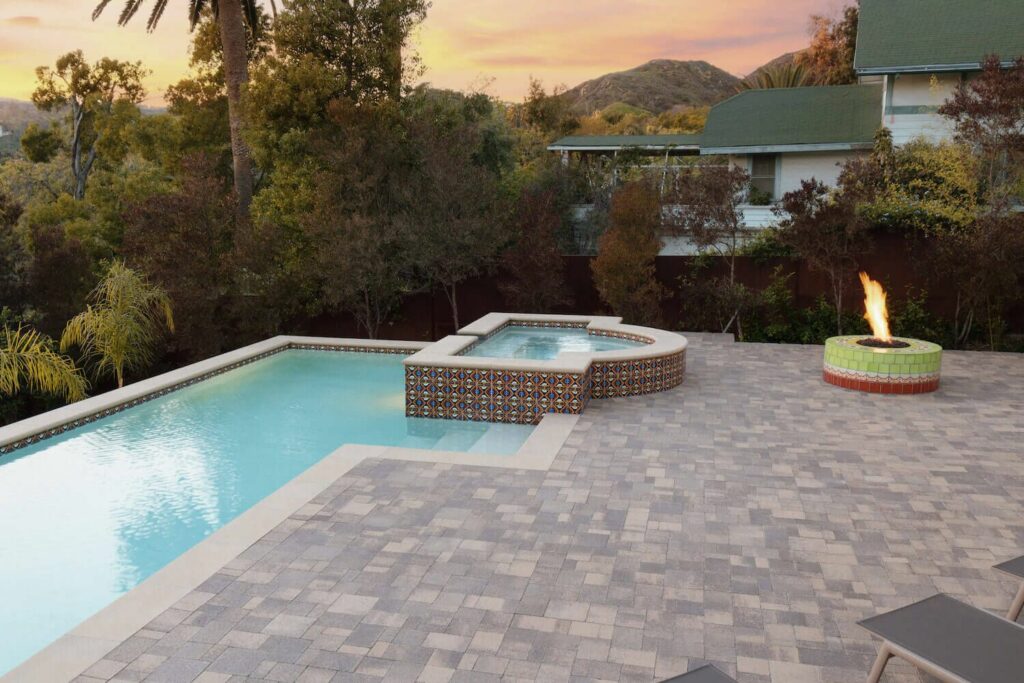
POOL PATIOS MADE FROM NATURAL STONE
Another elegant choice and one of the best pool paving materials for your Southern California backyard oasis are natural stone options. Natural stone materials we commonly use on pool design projects are flagstone and travertine.
Rectangular and square pieces of cut flagstone and travertine are fitted together much like that of paving stone installations. Laid upon a base of sand, these patios offer a firm surface that won’t crack like concrete applications. The joints in between natural stones are filled with polymeric sand which hardens the first time it is wetted.
Lighter color blends of travertine patios around pools provide a cool surface to walk upon, whereas flagstone can become slightly hot if a dark color is chosen. Both of these surfaces are slightly more smooth than a paver patio, but certainly not as slippery as some finished, glazed poured concrete.
PORCELAIN LANDSCAPE TILES
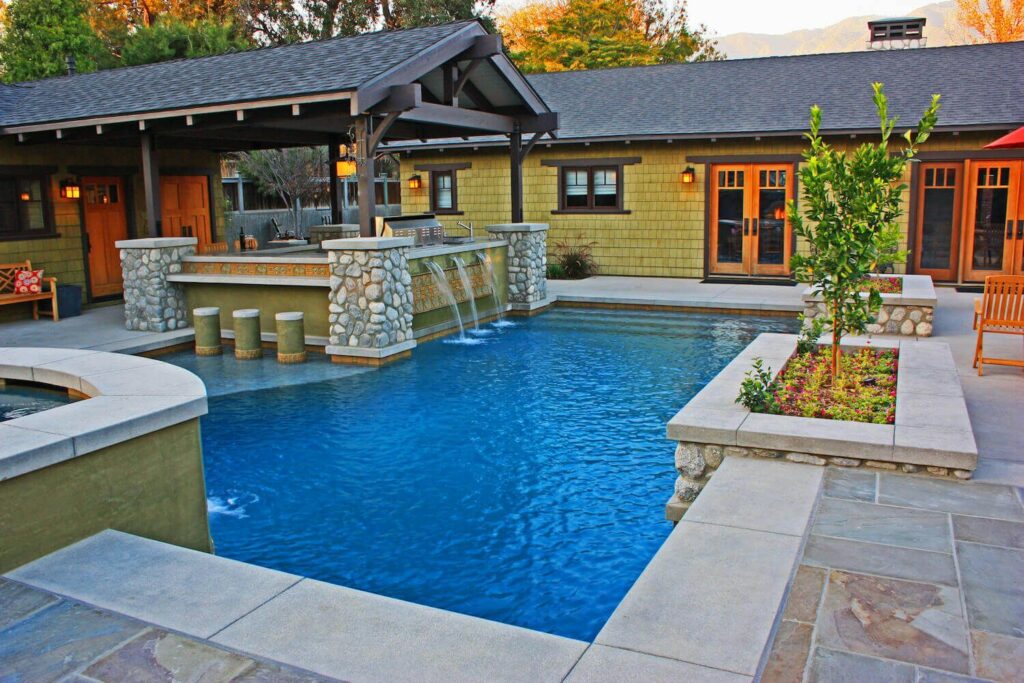
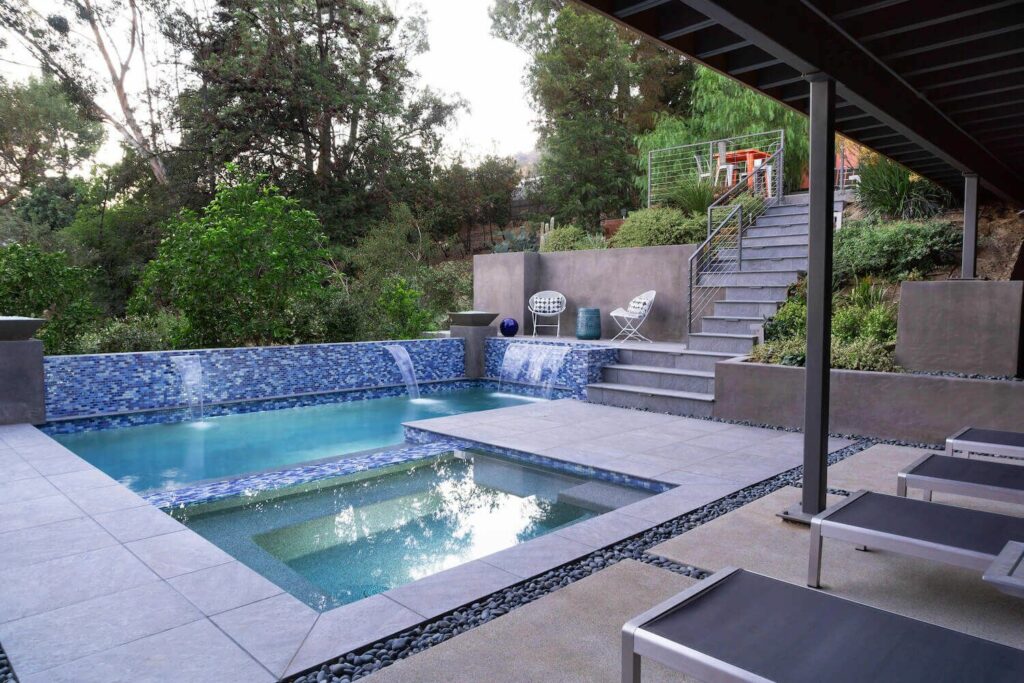
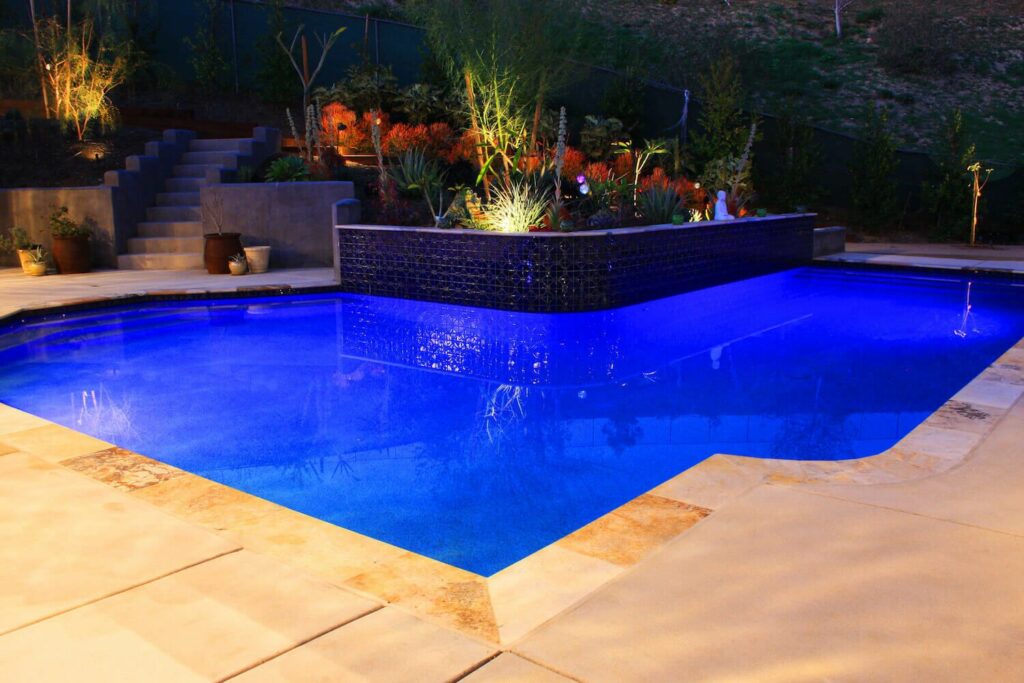
Creating a beautiful pool and surrounding patio is only part of the equation. Some of these considerations can include:
- Drainage solutions
- Plants that don’t make a mess in your pool or encroach on guests or surfaces
- Strategically-placed shade trees
- Hedges or structures for privacy screening
- Options for low-maintenance, less-mess turf areas
- Additions such as cabanas, changing rooms, outdoor kitchens
- Landscape Lighting for increased safety and nighttime functionality
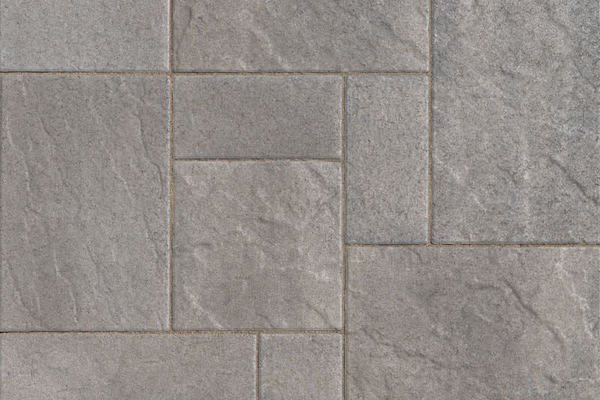
In Dark Gray Pewter
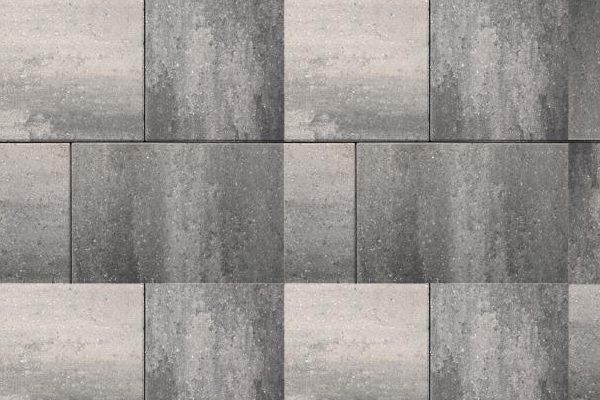
In Titanium
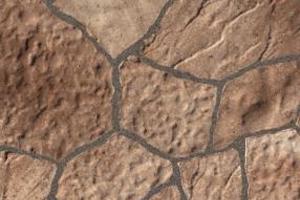
l In Amaretto